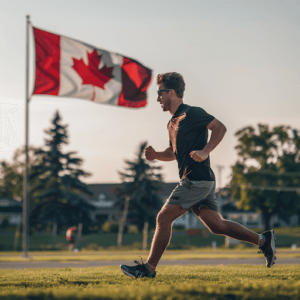Concussion Awareness Week 2024 is September 22nd to 28th, and a perfect opportunity to share information to help patients prevent and manage them. Whether you are an athlete, coach, parent, teacher, or anyone who appreciates health and wellness information, this article shares information about concussion risks, symptoms, and management options. Our goal is to educate patients so they can minimize their risks and prevent concussions from turning into potentially serious brain injuries.
What is a Concussion?
A concussion is a type of brain injury caused by a blow to the head, neck, or body that causes the brain to move rapidly inside the skull. Unlike some injuries, a concussion may not show up on routine X-rays (X-radiation), CT scans (Computed Tomography scans), or MRIs (Magnetic Resonance Imaging), making it essential to recognize the symptoms. Concussions can affect how a person thinks, remembers, and feels, which is why early detection and appropriate care are crucial.
Recognizing the Symptoms
Concussion symptoms can vary widely and may not appear immediately after an injury. They may include:
- Physical: Headache, dizziness, nausea, vomiting, blurred vision, and sensitivity to light or sound. Some people may also experience ringing in the ears or balance problems.
- Cognitive: Difficulty thinking clearly, feeling slowed down, or being “in a fog.” Issues with concentration and memory are also common.
- Emotional: Increased irritability, sadness, nervousness, or anxiety. Some individuals may feel more emotional than usual.
- Sleep-Related: Sleeping more or less than usual, or having trouble falling asleep.
If you or someone you know exhibits any of these symptoms following a head injury, it’s important to seek medical attention immediately.
What to Do If You Suspect a Concussion
If you suspect a concussion, the first and most important step is to stop all activity immediately. Continuing to play or engage in physical activity increases the risk of more severe, long-lasting symptoms and other injuries. Anyone with a suspected concussion should be evaluated by a medical professional as soon as possible.
Red Flag Symptoms: In some cases, a concussion may present more serious symptoms that require urgent medical attention. These include:
- Severe or worsening headache
- Neck pain or tenderness
- Loss of consciousness
- Seizures
- Repeated vomiting
- Increasing confusion, agitation, or restlessness
If any of these symptoms are present, call an ambulance immediately.
Concussion Recovery: What to Expect
Recovery from a concussion can vary from person to person. While some individuals recover within a few days, others may experience symptoms for weeks or even months. A general guideline for recovery includes a brief period of rest (24 to 48 hours), followed by a gradual return to normal activities under the guidance of a healthcare professional.
During recovery, it’s important to avoid activities that could result in another concussion. This means taking a break from sports, physical exertion, and even activities that require intense concentration, such as studying or using electronic devices. As symptoms improve, a healthcare provider will advise on a safe timeline to return to work, school, and physical activities.
Preventing Concussions
Preventing concussions is the best approach given their potential long term effects. While not all concussions can be avoided, there are steps you can take to reduce the risk:
- Follow Sport Specific Safety Guidelines: Respect and adhere to the rules designed to minimize head injuries, such as avoiding body checks in hockey for younger players or limiting contact in youth football practices.
- Wear Properly Fitted Equipment: Helmets are essential for many sports and activities. While they may not prevent concussions, they do help reduce the severity of head injuries.
- Promote Safe Play: Encourage fair play and teach athletes to respect the safety of their teammates and opponents. Education on safe techniques and awareness of the risks is crucial.
- Environmental Safety: Ensure that sports and recreational areas are free from hazards that could cause falls or collisions. Proper maintenance of playing surfaces can also prevent accidents.
Concussion Awareness Week: Get Involved
Concussion Awareness Week is a nationwide initiative to promote understanding and prevention of concussions. This year, organizations across Canada will host events, webinars, and workshops to educate communities about concussion safety. You can participate by sharing information on social media using the hashtag #WeAreHeadstrong, attending local events, or simply starting a conversation about concussion awareness with your family and friends.
At Alliance Chiropractic & Wellness Clinic, we’re committed to helping our community stay safe and healthy. If you have any questions about concussions or need advice on how to manage a suspected injury, contact us. We’re here to support you with expert guidance and care.
Information for this blog was sourced from Parachute Canada and the Sport Information Resource Centre (SIRC).
Want to stay updated on health information? Subscribe to our quarterly newsletter here.










